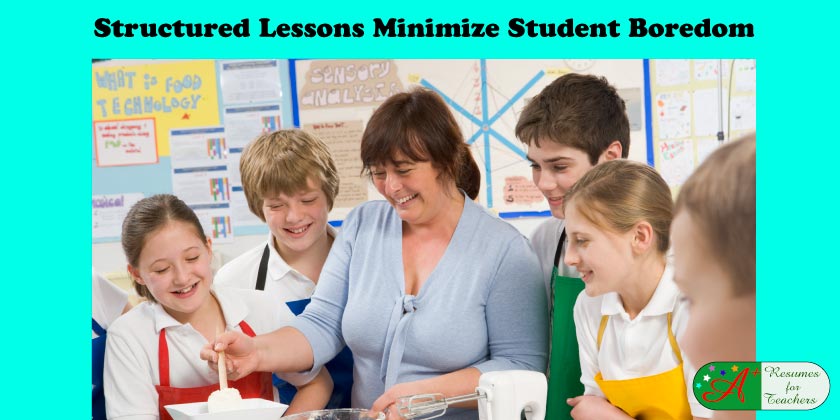We all know that practical subjects are greeted more favorably by students, but that doesn’t mean we can’t structure classroom-based lessons effectively to make them more appealing.
It is important because disruptive students can’t handle unstructured time. If your lessons aren’t packed with appropriate, engaging tasks, and you don’t have more up your sleeve for emergencies, you will ask for trouble.
All lessons should aim to set forth a clear objective that lets students know what and why they are learning, include breaks and changes in activity, interaction and participation, a fun activity, and a conclusion. These steps will enrich the purpose of your lessons for your students and keep them actively engaged, which will help with their comprehension and behavior.
No one should expect students to sit still and listen to information or perform activities they don’t fully understand or are not interested in. As their teacher, you have a choice in how information is presented to your students, and it is essential to make an effort to reach them.
What components make an effective lesson plan?
Lessons should have the following presentation to make them properly structured:
Clear Objective:
Students should know why they are learning something and its relevance. They should understand what they should know by the end of the lesson, which will help them have a goal for their learning.
Changes in Activity:
Sitting still on a hard chair for a lesson can be difficult, especially if you are bored. Change up the activities to get your students moving.
Fun:
Lessons need to be engaging and on a topic that your students would consider fun or get bored with. This is where creativity and devising unique participatory activities come in.
Interaction:
Lessons should not be a one-way street. This means your students need to participate in their learning and comprehension.
Summary:
At the end of the lesson, it is excellent to summarize the main points and to ask the class questions to check for their listening and comprehension of what was just taught.
Students should not be expected to sit still and listen to information or perform activities they don’t fully understand or are not interested in.
That’s why it’s essential to comprehend how you choose to present information to your students. You will find that the more effort you put into reaching them, the more you will get out of them.


